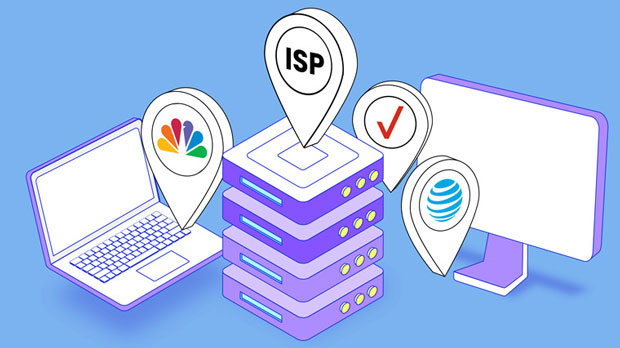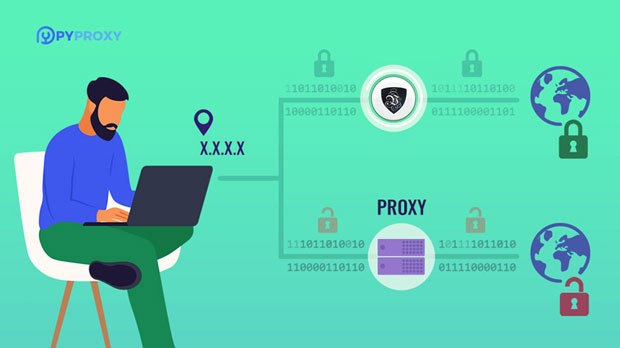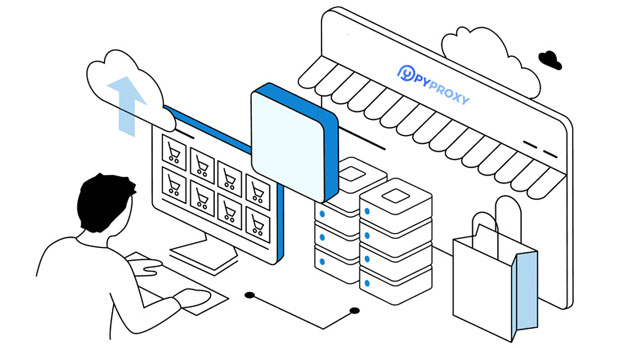In the world of web scraping, multithreaded crawlers are commonly used to collect data from numerous websites simultaneously, significantly increasing the efficiency of data extraction. However, one of the key challenges in multithreaded crawling is managing proxies that can handle multiple requests at once without getting blocked or rate-limited by target sites. Two popular proxy providers often compared for this use case are Oxylabs residential proxy and PYPROXY. This article will explore and compare the reliability of these two services within the context of multithreaded crawling scenarios. Introduction to Proxy Use in Multithreaded CrawlingWeb scraping, particularly when done at scale, involves sending multiple requests to websites to extract valuable data. In multithreaded crawling, multiple threads or processes operate simultaneously to perform web scraping tasks in parallel, which helps achieve higher throughput. However, websites often implement anti-bot mechanisms, such as rate-limiting or IP blocking, to prevent automated access. Proxies are essential in such scenarios as they allow crawlers to send requests from different IP addresses, circumventing detection and maintaining a high success rate in data extraction.Among the many proxy services available, Oxylabs Residential Proxy and PyProxy stand out as reliable options for web scraping, especially in multithreaded environments. Below, we will evaluate both based on factors such as performance, anonymity, availability, ease of use, and cost-effectiveness to help you decide which one is more reliable for your needs.Oxylabs Residential Proxy: Performance and FeaturesOxylabs Residential Proxy is a highly customizable proxy service that offers a range of options for users, including both residential and data center proxies. Its primary strength lies in its flexibility and ease of integration, particularly with Python-based web scraping tools and multithreaded applications. One of Oxylabs Residential Proxy’s notable features is its ability to rotate IP addresses automatically for each request, ensuring that crawlers can avoid detection by websites. The service also supports multiple proxy types, including HTTP, HTTPS, and socks5 proxies, making it a versatile choice for different web scraping scenarios.However, Oxylabs Residential Proxy’s performance can vary depending on the quality of the proxy pool you choose. residential proxies tend to perform better in terms of evading detection since they are associated with real users' IP addresses, making it harder for websites to distinguish between legitimate and automated traffic. On the other hand, data center proxies, while faster, are easier to identify and block.The main concern with Oxylabs Residential Proxy in a multithreaded crawling context is its rate-limiting. While the service provides tools for rotating proxies, there can still be instances where a high volume of requests leads to slower response times, which can be problematic for large-scale crawlers. Furthermore, Oxylabs Residential Proxy’s support can be somewhat lacking, with users often having to troubleshoot issues themselves.PyProxy: A Comprehensive OverviewPyProxy is a premium proxy service provider specializing in residential proxies. Unlike Oxylabs Residential Proxy, PyProxy offers a more comprehensive solution with robust infrastructure and high-quality proxies designed to withstand large-scale scraping operations.PyProxy network is vast, with millions of IP addresses spread across numerous countries. This extensive network is an essential feature for multithreaded crawling, as it enables the rotation of IP addresses at scale, minimizing the risk of IP blocks or rate-limiting. In addition to this, PyProxy provides advanced features like session control, which allows users to maintain a connection with the same IP for a longer duration, making it perfect for tasks that require consistent session behavior.In terms of performance, PyProxy outshines Oxylabs Residential Proxy in several ways. First, it offers excellent speed, which is crucial when running crawlers in parallel. With a vast pool of residential proxies and superior infrastructure, PyProxy can handle a high volume of concurrent requests without sacrificing reliability. Furthermore, its residential proxies are extremely difficult for websites to block, ensuring that the proxy network remains effective even in high-demand situations.PyProxy also excels in customer support, with a dedicated team available 24/7 to assist with troubleshooting and optimization. This level of support is critical when running multithreaded crawlers, as any downtime or failure to rotate IPs properly can severely disrupt scraping operations.Reliability in Multithreaded CrawlingWhen it comes to multithreaded crawling, reliability is the most important factor to consider. In this context, both Oxylabs Residential Proxy and PyProxy provide unique advantages, but PyProxy stands out for its ability to scale with large crawling operations.Oxylabs Residential Proxy is a great option for smaller or less demanding scraping projects, especially if you're already working within the Python ecosystem. However, as the complexity and scale of the project increase, you may encounter challenges in terms of rate-limiting, IP rotation, and proxy quality. These challenges can result in slower speeds, higher failure rates, and even partial data extraction, which can significantly undermine the effectiveness of multithreaded crawlers.In contrast, PyProxy excels at providing the necessary infrastructure and features to support large-scale, high-performance multithreaded crawlers. Its vast pool of residential proxies, session control capabilities, and high-speed connections make it a more reliable option for handling thousands of concurrent requests. For businesses or developers looking to run large-scale crawlers, PyProxy provides the reliability needed to avoid IP blocks and ensure that scraping tasks proceed smoothly.Cost ConsiderationsWhile PyProxy offers superior performance, its premium pricing may be a concern for some users. The cost of Py proxy residential proxies is typically higher than that of Oxylabs Residential Proxy, but this cost comes with significant benefits in terms of reliability and customer support.Oxylabs Residential Proxy, on the other hand, is more affordable and may be suitable for smaller projects or those on a tight budget. However, the lower price point comes at the expense of certain features like IP quality and customer support, which could affect the overall effectiveness of multithreaded crawling operations.When choosing between Oxylabs Residential Proxy and PyProxy, businesses must weigh the cost against the expected volume and scale of their web scraping tasks. For smaller or less complex operations, Oxylabs Residential Proxy might be sufficient, but for large-scale, high-priority crawling tasks, PyProxy premium offering is likely the better investment.Conclusion: Which Proxy Provider is More Reliable?In the context of multithreaded crawling, PyProxy is the more reliable choice for most users, particularly those working on large-scale or high-performance scraping projects. Its extensive proxy pool, high-speed connections, and excellent customer support make it an ideal option for ensuring consistent, uninterrupted web scraping.While Oxylabs Residential Proxy can still be a viable option for smaller-scale projects or users who are more familiar with Python, it lacks the scalability, IP quality, and overall reliability required for large-scale, multithreaded crawling. As such, PyProxy is generally the preferred option for users who need a proxy service that can handle the demands of multithreaded scraping without compromising performance or reliability.
Sep 28, 2025



































































